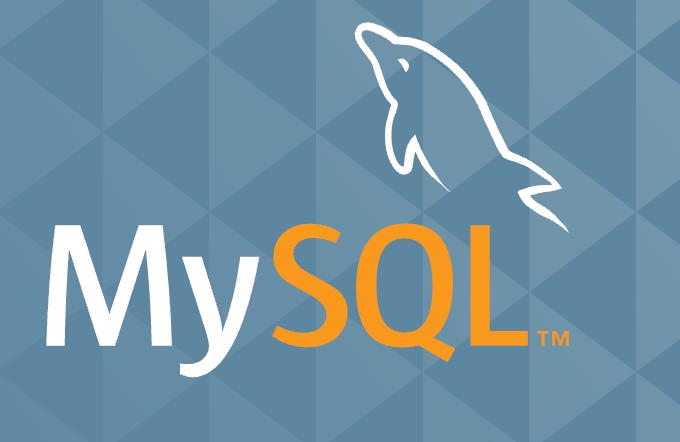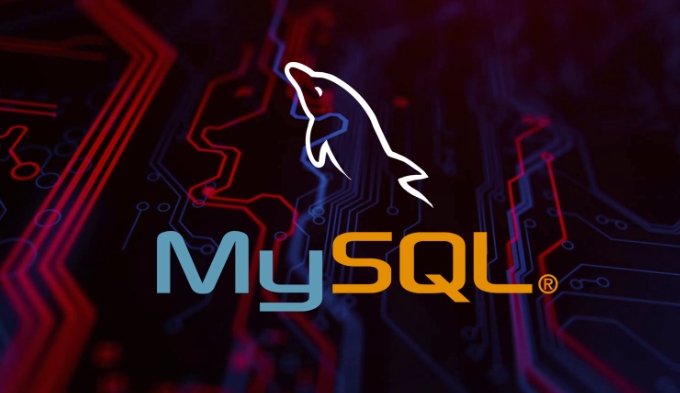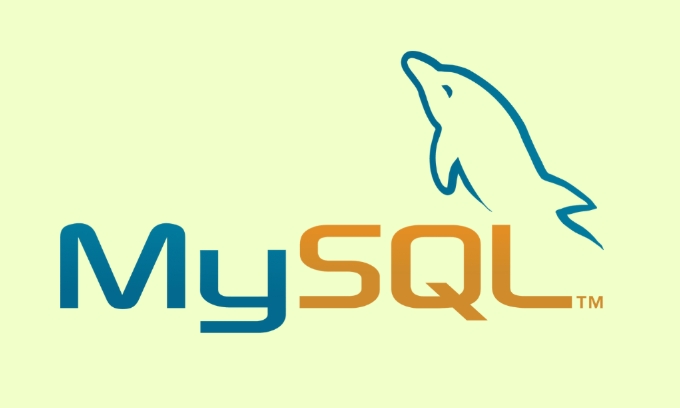To migrate older applications to MySQL 8.0 successfully, first check application compatibility, then carefully migrate and convert data, update configuration and security settings, and monitor performance post-migration. 1. Check application compatibility by updating database drivers or temporarily configuring MySQL to use older defaults like mysql_native_password and utf8mb4. 2. Migrate data carefully by converting MyISAM tables to InnoDB, using mysqldump with --default-character-set=utf8mb4, and setting default character sets and collations appropriately. 3. Update configuration files and security settings, including sql_mode, max_allowed_packet, and user authentication plugins, while tightening permissions and removing unused accounts. 4. Monitor performance after migration using tools like mysqltuner.pl, enable the slow query log, and verify backup integrity to ensure a stable and optimized environment.

Migrating older applications to MySQL 8.0 can unlock performance improvements, better security, and access to new features—but it’s not always a straightforward process. Compatibility issues, deprecated features, and configuration changes can trip you up if you’re not prepared.

Here’s how to approach the migration with fewer headaches.
Check Application Compatibility with MySQL 8.0
Before you start moving data or changing configs, you need to make sure your application will work with MySQL 8.0.

MySQL 8.0 dropped support for some older syntax and features. For example, the utf8 character set is now effectively utf8mb4, and the default authentication plugin changed from mysql_native_password to caching_sha2_password.
If your app uses an older version of a database driver or connector (like JDBC or PHP’s mysqli), it might not support these new defaults. You’ll need to either:

- Update the application’s database driver to a version compatible with MySQL 8.0
- Configure MySQL to use the older authentication plugin and character set (temporarily)
- Test database queries that might rely on deprecated syntax
A good way to start is by running your app against a test instance of MySQL 8.0 before doing a full migration.
Migrate and Convert Your Data Carefully
Once compatibility looks good, it’s time to move the data. But don’t just dump and restore and call it a day.
Older databases might be using MyISAM tables, which are still supported but no longer the default. If you’re moving to MySQL 8.0, consider switching to InnoDB for better performance and reliability.
Also, check your character sets and collations. If your old database used latin1 or utf8, you’ll want to convert to utf8mb4 to support full Unicode (including emojis and special characters). This can be done during migration using ALTER DATABASE and ALTER TABLE statements.
Here’s a quick checklist:
- Use
mysqldumpwith--default-character-set=utf8mb4 - Convert tables to InnoDB:
ALTER TABLE your_table ENGINE=InnoDB - Set default character set to
utf8mb4in your MySQL config - Double-check collation settings, especially if your app is case-sensitive or language-specific
This step takes some planning, but it ensures your data stays clean and works well with modern applications.
Update Configuration and Security Settings
MySQL 8.0 introduced several security enhancements, and some defaults are stricter than in older versions.
For example, user authentication is more secure by default, but that can break apps that expect the older password plugin. If you can’t update the app’s database connector right away, you can create users with the old plugin temporarily:
CREATE USER 'app_user'@'%' IDENTIFIED WITH mysql_native_password BY 'your_password';
Also, review your my.cnf or my.ini file. MySQL 8.0 deprecates some configuration options and introduces new ones. If you had custom settings for query cache or MyISAM-specific tuning, those may need to be removed or adjusted.
Here are a few other config items to double-check:
sql_mode– MySQL 8.0 has a stricter default modemax_allowed_packet– Adjust if you’re working with large datasetsinnodb_file_per_table– Should be enabled for better manageability
Security-wise, take the opportunity to clean up user permissions. Remove unused accounts and tighten access rules.
Monitor and Optimize After Migration
After the migration is done, keep an eye on performance and errors.
Use tools like mysqltuner.pl or built-in performance schema to spot bottlenecks. You might notice differences in query performance—especially if you switched from MyISAM to InnoDB or changed character sets.
Enable the slow query log to catch any inefficient queries that slipped through testing. You can do that by adding:
slow_query_log = 1 long_query_time = 1 log_slow_queries = /var/log/mysql/mysql-slow.log
Also, make sure your backups are working with the new setup. Test a restore from your latest dump to confirm everything is in order.
Migrating legacy apps to MySQL 8.0 doesn’t have to be a nightmare. With a little planning and testing, you can modernize your database stack without breaking what already works. Just don’t skip the compatibility checks and take time to optimize after the move.
The above is the detailed content of Migrating Legacy Applications to MySQL 8.0. For more information, please follow other related articles on the PHP Chinese website!

Hot AI Tools

Undress AI Tool
Undress images for free

Undresser.AI Undress
AI-powered app for creating realistic nude photos

AI Clothes Remover
Online AI tool for removing clothes from photos.

Clothoff.io
AI clothes remover

Video Face Swap
Swap faces in any video effortlessly with our completely free AI face swap tool!

Hot Article

Hot Tools

Notepad++7.3.1
Easy-to-use and free code editor

SublimeText3 Chinese version
Chinese version, very easy to use

Zend Studio 13.0.1
Powerful PHP integrated development environment

Dreamweaver CS6
Visual web development tools

SublimeText3 Mac version
God-level code editing software (SublimeText3)
 Using Common Table Expressions (CTEs) in MySQL 8
Jul 12, 2025 am 02:23 AM
Using Common Table Expressions (CTEs) in MySQL 8
Jul 12, 2025 am 02:23 AM
CTEs are a feature introduced by MySQL8.0 to improve the readability and maintenance of complex queries. 1. CTE is a temporary result set, which is only valid in the current query, has a clear structure, and supports duplicate references; 2. Compared with subqueries, CTE is more readable, reusable and supports recursion; 3. Recursive CTE can process hierarchical data, such as organizational structure, which needs to include initial query and recursion parts; 4. Use suggestions include avoiding abuse, naming specifications, paying attention to performance and debugging methods.
 Strategies for MySQL Query Performance Optimization
Jul 13, 2025 am 01:45 AM
Strategies for MySQL Query Performance Optimization
Jul 13, 2025 am 01:45 AM
MySQL query performance optimization needs to start from the core points, including rational use of indexes, optimization of SQL statements, table structure design and partitioning strategies, and utilization of cache and monitoring tools. 1. Use indexes reasonably: Create indexes on commonly used query fields, avoid full table scanning, pay attention to the combined index order, do not add indexes in low selective fields, and avoid redundant indexes. 2. Optimize SQL queries: Avoid SELECT*, do not use functions in WHERE, reduce subquery nesting, and optimize paging query methods. 3. Table structure design and partitioning: select paradigm or anti-paradigm according to read and write scenarios, select appropriate field types, clean data regularly, and consider horizontal tables to divide tables or partition by time. 4. Utilize cache and monitoring: Use Redis cache to reduce database pressure and enable slow query
 Best Practices for Securing Remote Access to MySQL
Jul 12, 2025 am 02:25 AM
Best Practices for Securing Remote Access to MySQL
Jul 12, 2025 am 02:25 AM
The security of remote access to MySQL can be guaranteed by restricting permissions, encrypting communications, and regular audits. 1. Set a strong password and enable SSL encryption. Force-ssl-mode=REQUIRED when connecting to the client; 2. Restrict access to IP and user rights, create a dedicated account and grant the minimum necessary permissions, and disable root remote login; 3. Configure firewall rules, close unnecessary ports, and use springboard machines or SSH tunnels to enhance access control; 4. Enable logging and regularly audit connection behavior, use monitoring tools to detect abnormal activities in a timely manner to ensure database security.
 Analyzing Query Execution with MySQL EXPLAIN
Jul 12, 2025 am 02:07 AM
Analyzing Query Execution with MySQL EXPLAIN
Jul 12, 2025 am 02:07 AM
MySQL's EXPLAIN is a tool used to analyze query execution plans. You can view the execution process by adding EXPLAIN before the SELECT query. 1. The main fields include id, select_type, table, type, key, Extra, etc.; 2. Efficient query needs to pay attention to type (such as const, eq_ref is the best), key (whether to use the appropriate index) and Extra (avoid Usingfilesort and Usingtemporary); 3. Common optimization suggestions: avoid using functions or blurring the leading wildcards for fields, ensure the consistent field types, reasonably set the connection field index, optimize sorting and grouping operations to improve performance and reduce capital
 how to connect excel to mysql database
Jul 16, 2025 am 02:52 AM
how to connect excel to mysql database
Jul 16, 2025 am 02:52 AM
There are three ways to connect Excel to MySQL database: 1. Use PowerQuery: After installing the MySQLODBC driver, establish connections and import data through Excel's built-in PowerQuery function, and support timed refresh; 2. Use MySQLforExcel plug-in: The official plug-in provides a friendly interface, supports two-way synchronization and table import back to MySQL, and pay attention to version compatibility; 3. Use VBA ADO programming: suitable for advanced users, and achieve flexible connections and queries by writing macro code. Choose the appropriate method according to your needs and technical level. PowerQuery or MySQLforExcel is recommended for daily use, and VBA is better for automated processing.
 Securing MySQL Connections with SSL/TLS Encryption
Jul 21, 2025 am 02:08 AM
Securing MySQL Connections with SSL/TLS Encryption
Jul 21, 2025 am 02:08 AM
Why do I need SSL/TLS encryption MySQL connection? Because unencrypted connections may cause sensitive data to be intercepted, enabling SSL/TLS can prevent man-in-the-middle attacks and meet compliance requirements; 2. How to configure SSL/TLS for MySQL? You need to generate a certificate and a private key, modify the configuration file to specify the ssl-ca, ssl-cert and ssl-key paths and restart the service; 3. How to force SSL when the client connects? Implemented by specifying REQUIRESSL or REQUIREX509 when creating a user; 4. Details that are easily overlooked in SSL configuration include certificate path permissions, certificate expiration issues, and client configuration requirements.
 mysql common table expression (cte) example
Jul 14, 2025 am 02:28 AM
mysql common table expression (cte) example
Jul 14, 2025 am 02:28 AM
CTE is a temporary result set in MySQL used to simplify complex queries. It can be referenced multiple times in the current query, improving code readability and maintenance. For example, when looking for the latest orders for each user in the orders table, you can first obtain the latest order date for each user through the CTE, and then associate it with the original table to obtain the complete record. Compared with subqueries, the CTE structure is clearer and the logic is easier to debug. Usage tips include explicit alias, concatenating multiple CTEs, and processing tree data with recursive CTEs. Mastering CTE can make SQL more elegant and efficient.
 Choosing appropriate data types for columns in MySQL tables
Jul 15, 2025 am 02:25 AM
Choosing appropriate data types for columns in MySQL tables
Jul 15, 2025 am 02:25 AM
WhensettingupMySQLtables,choosingtherightdatatypesiscrucialforefficiencyandscalability.1)Understandthedataeachcolumnwillstore—numbers,text,dates,orflags—andchooseaccordingly.2)UseCHARforfixed-lengthdatalikecountrycodesandVARCHARforvariable-lengthdata






